
India is usually linked to Hinduism and as a result Hindu death practices are widespread in the country. One of the holiest Hindu practices is being cremated at the Ganges river. This article discusses the ancient traditions that link the river to cremation, reincarnation and nirvana. We go into details about the cremations taking place in the Ghats of Varanasi, one of the most significant religious centers in India.
Furthermore, India is home to dozens of other religious practices. For instance, although Zoroastrianism originates from Iran, India has nowadays the largest number of Zoroastrians. The Parsi community, specifically, practices fascinating sky burials at the Towers of Silence. Finally, the last part of this article focuses on the use of vultures during these sky burials in Mumbai.
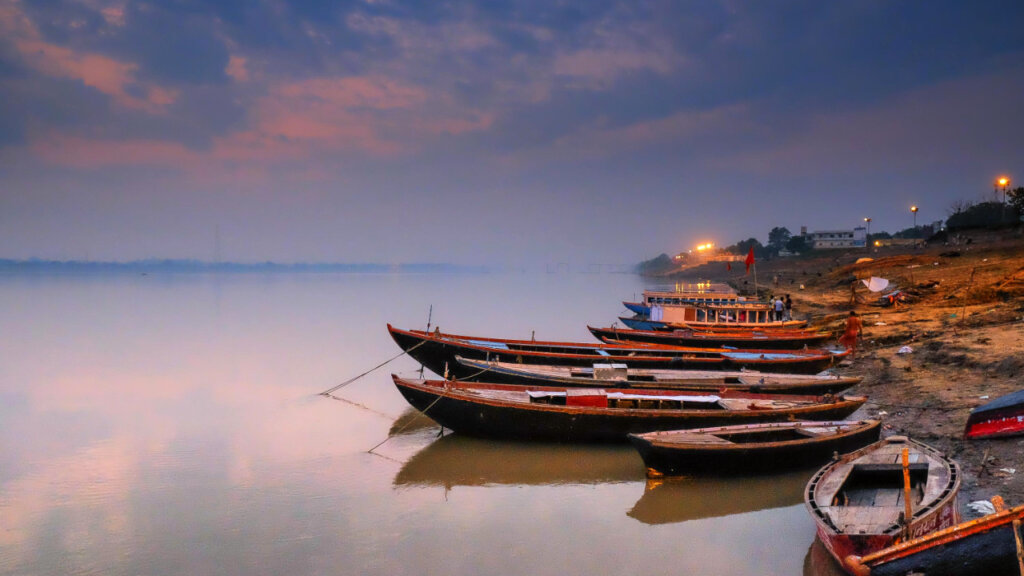
Hinduism has over a billion followers, making it the world’s third largest religion. As a result, there are multiple Hindu customs, groups and schools of thought. Moreover, all these different denominations may take different approaches to death, dying and funeral practices. In almost every Hindu denomination, though, the River Ganges plays a crucial role. But why is that the case?
The vast majority of Hindus practice cremation as their main funerary practice. Additionally, cremations at the banks of the Ganges are holy according to ancient traditions. It is common for relatives to either transport their dead there to be cremated. Alternatively, Hindus may release the ashes of their cremated loved ones into the river. Moreover, cremations by the Ganges are directly linked to the concept of nirvana – or reaching enlightenment.
Amazingly, Ganges boasts a length of over 2.500 km (1570 miles), providing water to over 10% of the world’s population! It is perhaps due to this that the river is the embodiment of the Goddess Ganga according to Hindu traditions. Moreover, Ganga is the Goddess of forgiveness and purification. As a result, Hindus historically have been using the river for multiple rituals as well as everyday practices.
For example, some bathe in its waters, perform rituals for their ancestors and even wash their clothes in the purifying waters. If someone is visiting the banks of the enormous river, it is common that they will take a bit of water with them. Nobody needs, however, purification and forgiveness more than the souls of the dead. In order to understand the importance of Ganges for funerary rituals, it is perhaps useful to discuss its religious history.
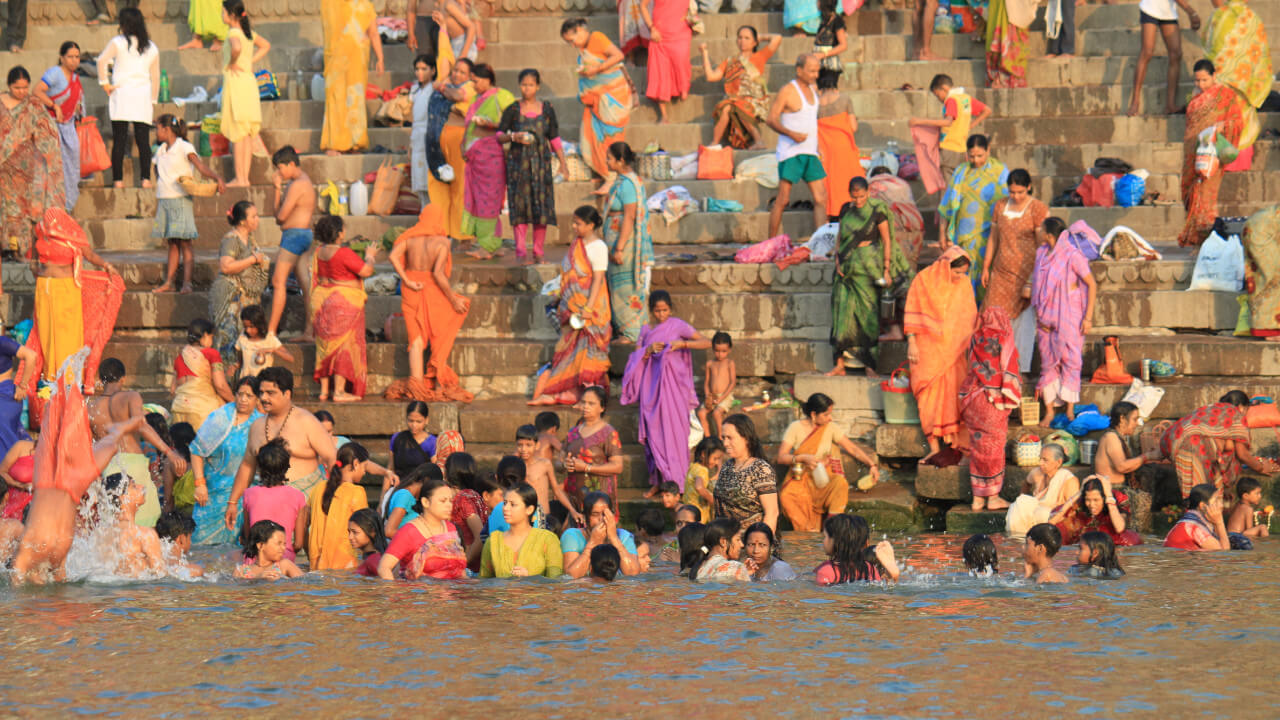
According to Hindu beliefs, Ganges connects three worlds: It comes from the heavens, runs through earth and ends up descending into the underworld. In this way the river functions as the connecting link between these three planes of existence.
As a result, both the living and the dead are benefiting from its purifying waters. In Sanskrit the river is also described as a triloka-patha-gamini literally translating to “the road that travels three worlds”. Due to its connection to the Hindu netherworld, Ganges is the ideal place to perform rites and rituals for the dead.
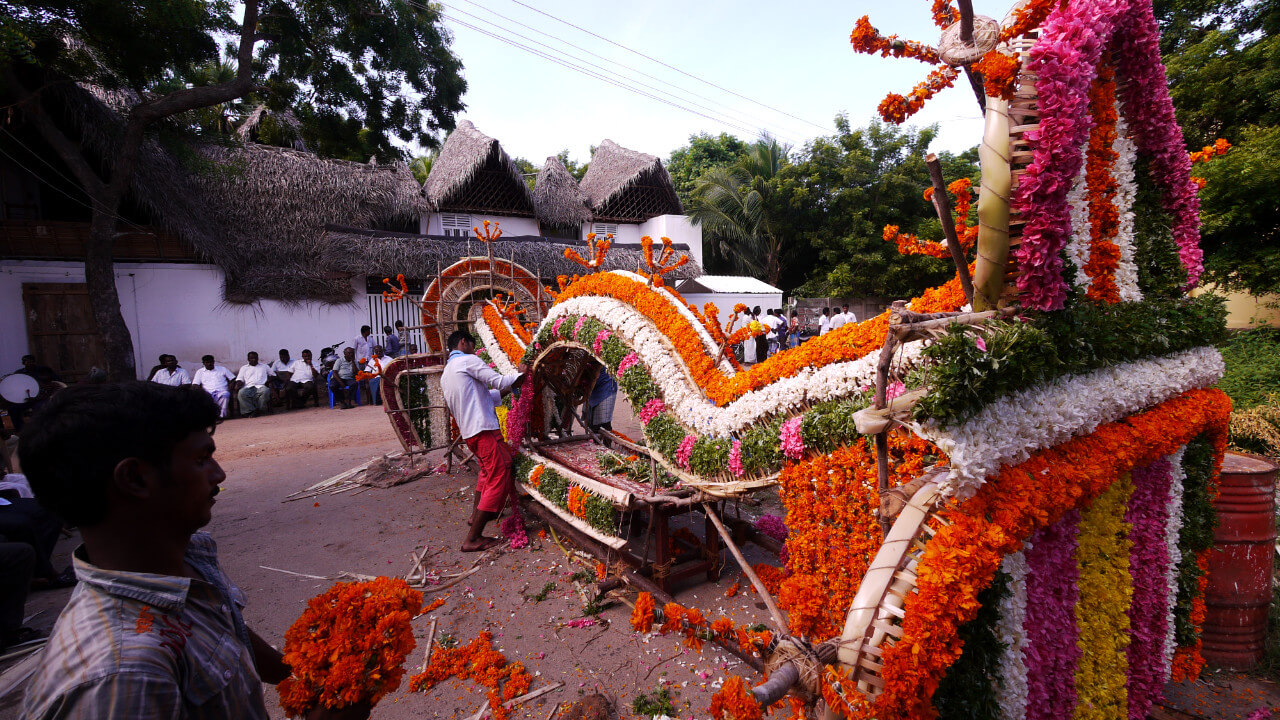
One of these rites is the pinda pradana. Hindus offer rice balls with sesame to the river. While presenting their offerings to Ganges they are saying out loud the names of their dead relatives. The customs support that every sesame seed on these rice balls will offer at least a thousand years in heaven to the deceased.
Moreover, the waters of Ganges river are so pure and sacred that even the worst sinners can benefit from it. For example, if the ashes of a sinner are deposited into the river, they shall receive instant salvation. That is also present in the folk tale of Vahika, a terrible sinner. He died in the jungle after a tiger attack. Vultures were then eating his body and his soul was on its way to hell. However, a small part of his body slipped through the claw of a vulture and fell into the Ganges. As a result, his soul was instantly forgiving and went to heaven instead.
There is, perhaps, no holier place on the banks of Ganges than the city of Varanasi.
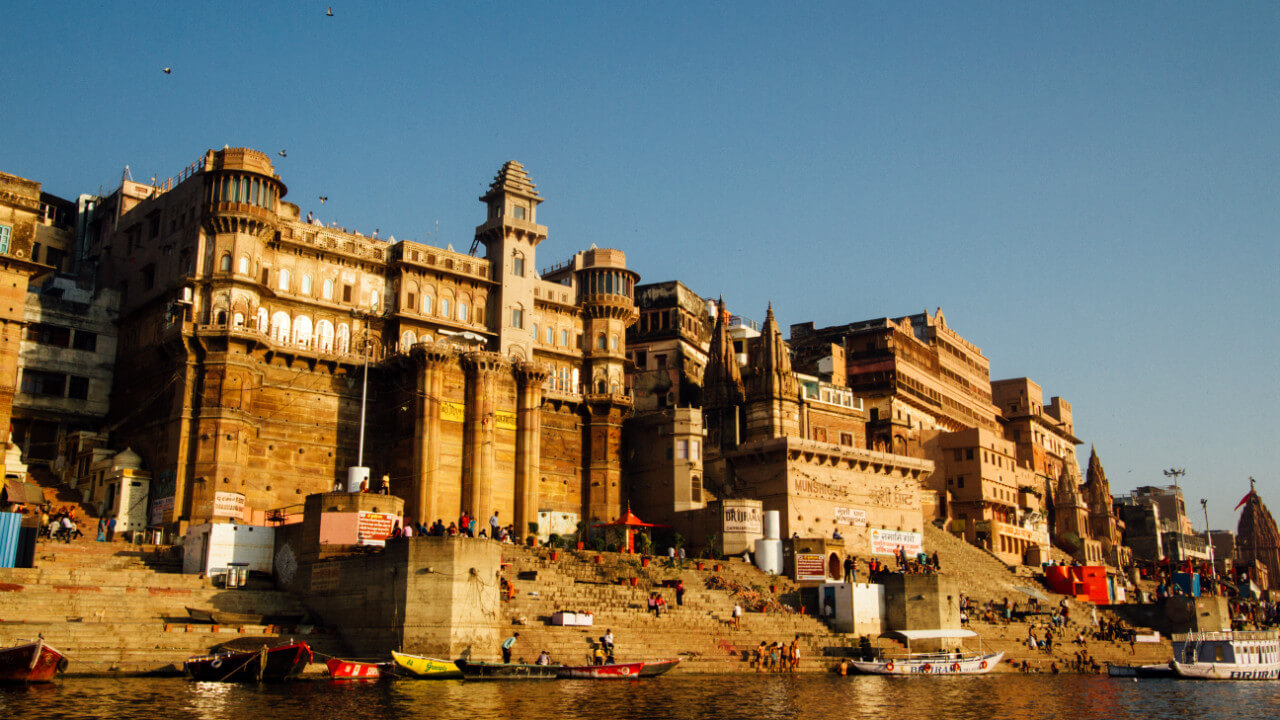
Most Hindus would agree that there is no more ideal location to be cremated than Varanasi. Known also also Benares or Banaras, the city is in the Uttar Pradesh state. It also is one of the oldest cities worldwide to be continuously inhabited. In addition to Hindus, adherents of Jainism and Buddhism also consider the city sacred. Hindu beliefs support that people who die in Varanasi and are then cremated at the Ghats of the city are granted salvation. Ghats refer to broad staircases expanding for many meters and going all the way down to the river.
Varanasi has 88 ghats which people use in a variety of manners. For example, some are bathing ghats while others are for praying (“puja”). Two of them, though, are exclusively used for cremations. These are the famous Manikarnika and Harishchandra ghats.
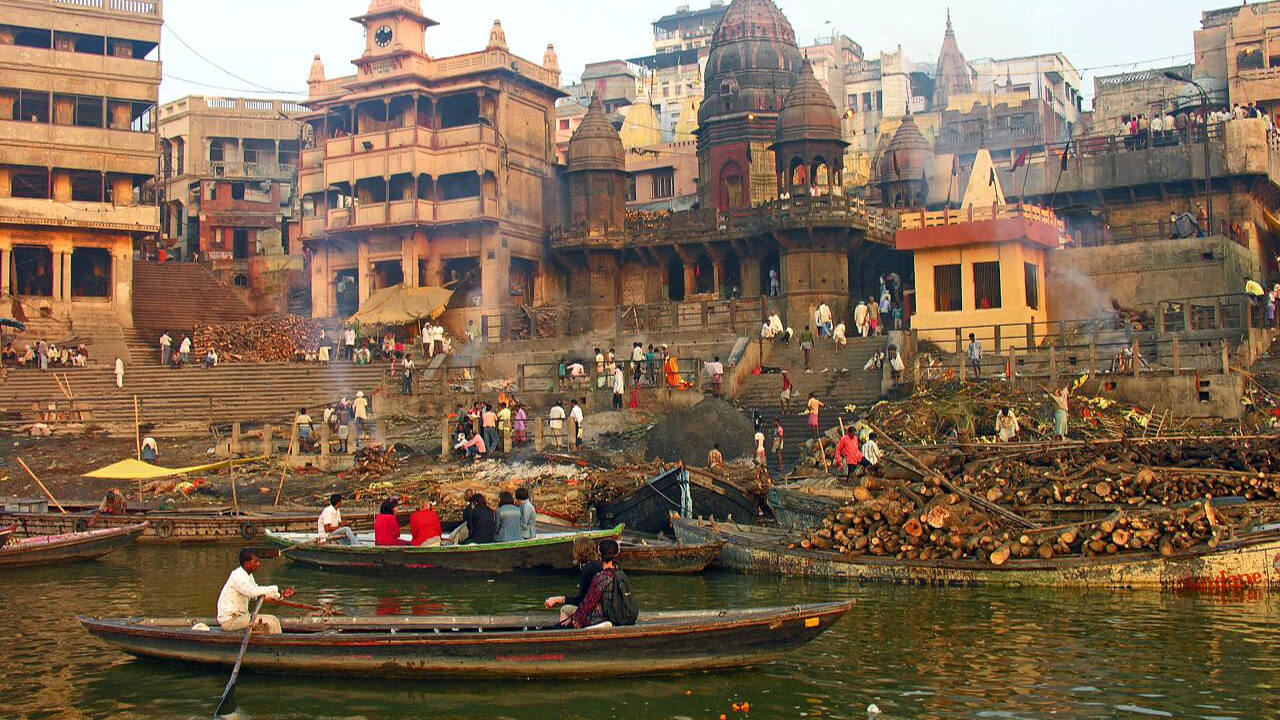
Hinduism sees cremation as the final rite of passage and not just as a funerary practice. Additionally, researchers have well documented how cremations at the ghats of Varanasi take place. For example, Hindus practice a special puja similar to what we would describe as last rites. Furthermore, they burn incense and repeat mantras for the dead.
Moreover, it is usually the eldest son of the deceased that takes care of the funeral arrangements. For instance, they have to briefly dip the corpse into the river before cremation. Then, the son has to buy the (expensive) wood necessary for the cremation. Bringing your own wood would be impossible since it takes 270 to 400kg (600 to 880lbs) to cremate a corpse. Therefore, locals build large wood pyres so the flames can engulf the body – after all there is no crematory involved in the process.
However, the wood pyres are not always successful in fully cremating the body. In these cases Hindus release any remains into the Ganges. Poor families may also dispose of their dead relatives in the river since they cannot afford to cremate them.
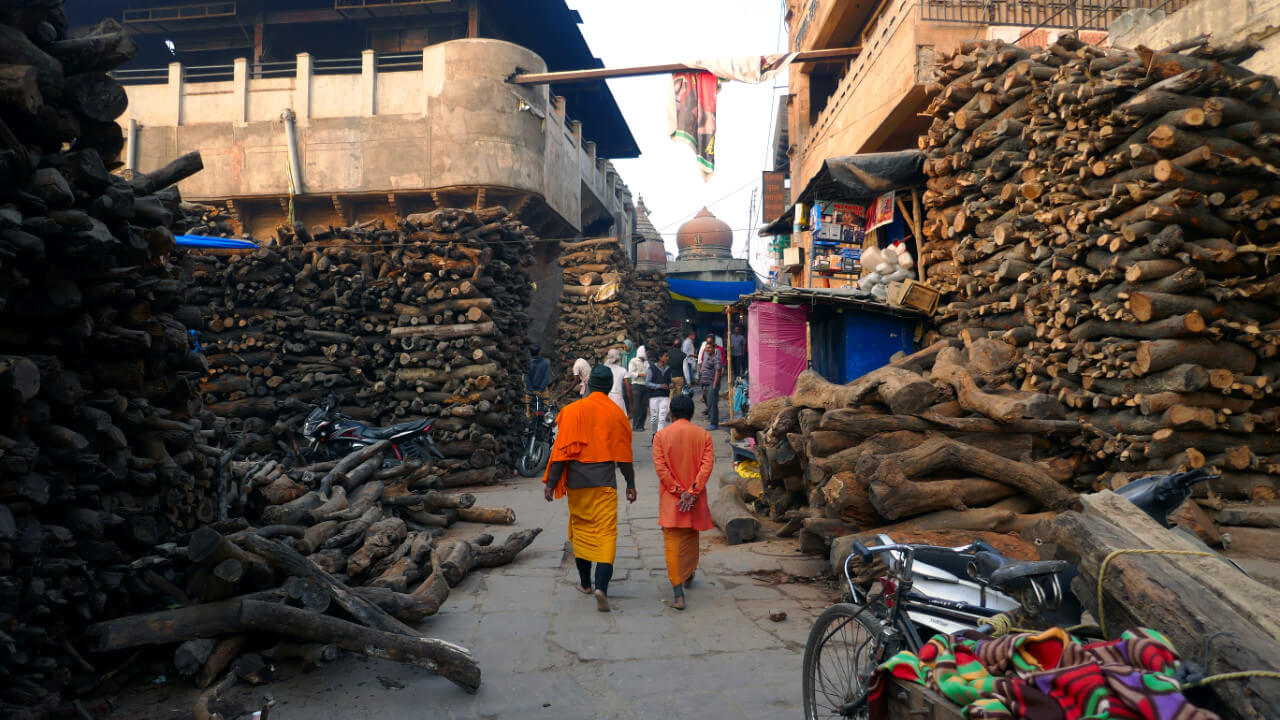
These practices in combination with poor sewage systems have made Ganges particularly polluted. However, devout Hindus still believe in the purifying nature of its waters.
The Indian government tried to support certain initiatives to clean the river and change the practices but to no avail.
The numbers also indicate the significance of the cremation ghats of Varanasi. For instance, around 40.000 cremations take place annually in the two cremation ghats of the city. This corresponds to an average of at least 80 cremations per day, seven days a week, 365 days a year. The ghats are always open and operate almost the whole day too. Additionally, that means that almost 2 out of 1000 people who die in the Indian subcontinent annually are actually cremated in Varanasi.
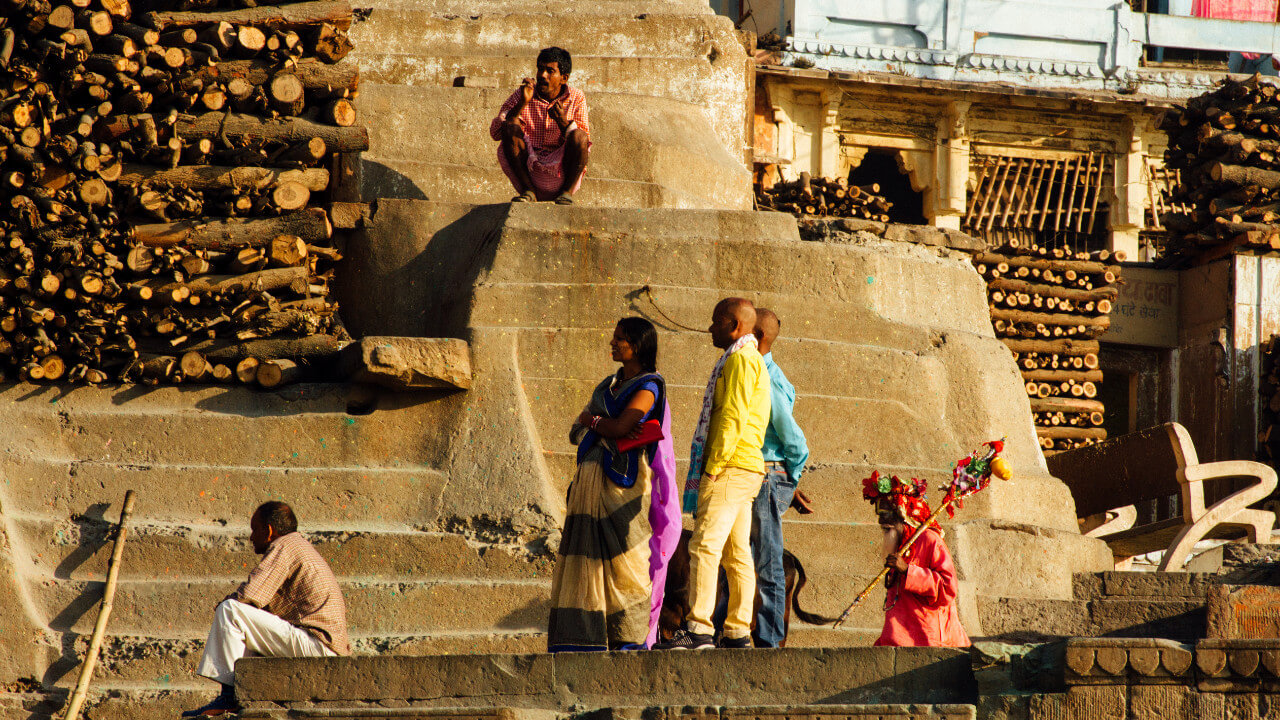
Although Hinduism is commonly linked to India, it would be wrong to assume that other religious practices are absent. The subcontinent is home to hundreds of religions and, as a result, many funeral practices are present too. Additionally, we are next focusing on a minority religion called Zoroastrianism and the significance of vultures for its sky burials.
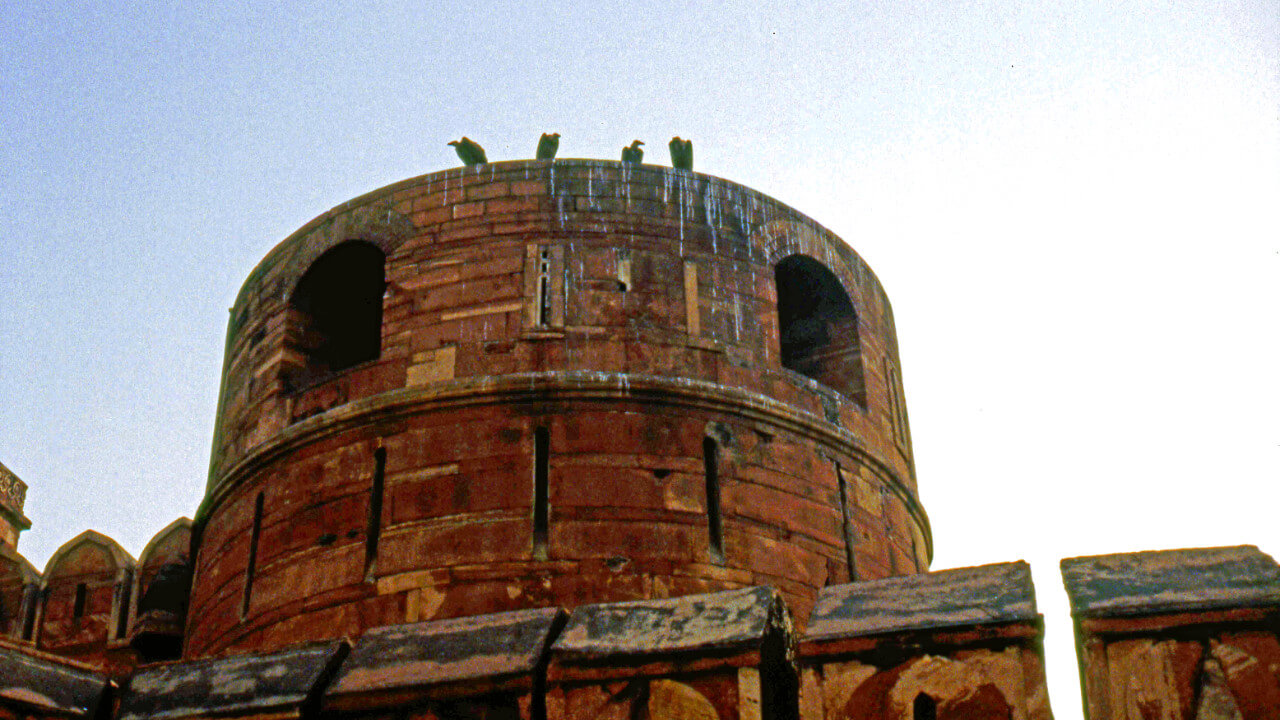
Most Zoroastrians in India belong to the Parsi community. The name originates from the fact that this ethnic group arrived in India from Persia – modern day Iran. Zoroastrians believe in a constant battle between the Forces of Light and the Forces of Darkness. To them, the Forces of Light are quite literally represented by the light of fire. As a result, fire is sacred to them. Since fire is sacred to Zoroastrians, cremation would be an unthinkable offense – death would pollute the fire.
In addition to fire, earth, air and water are also extremely significant to Zoroastrians. These elements are holy too and need to remain pure. Therefore, earth or water burials would also disturb the Forces of Light since they would pollute the elements. In order to find a solution to this, Parsi – and other Zoroastrians worldwide – started using sky burials. They specifically used the so-called Towers of Silence and vultures for their funerary practices.
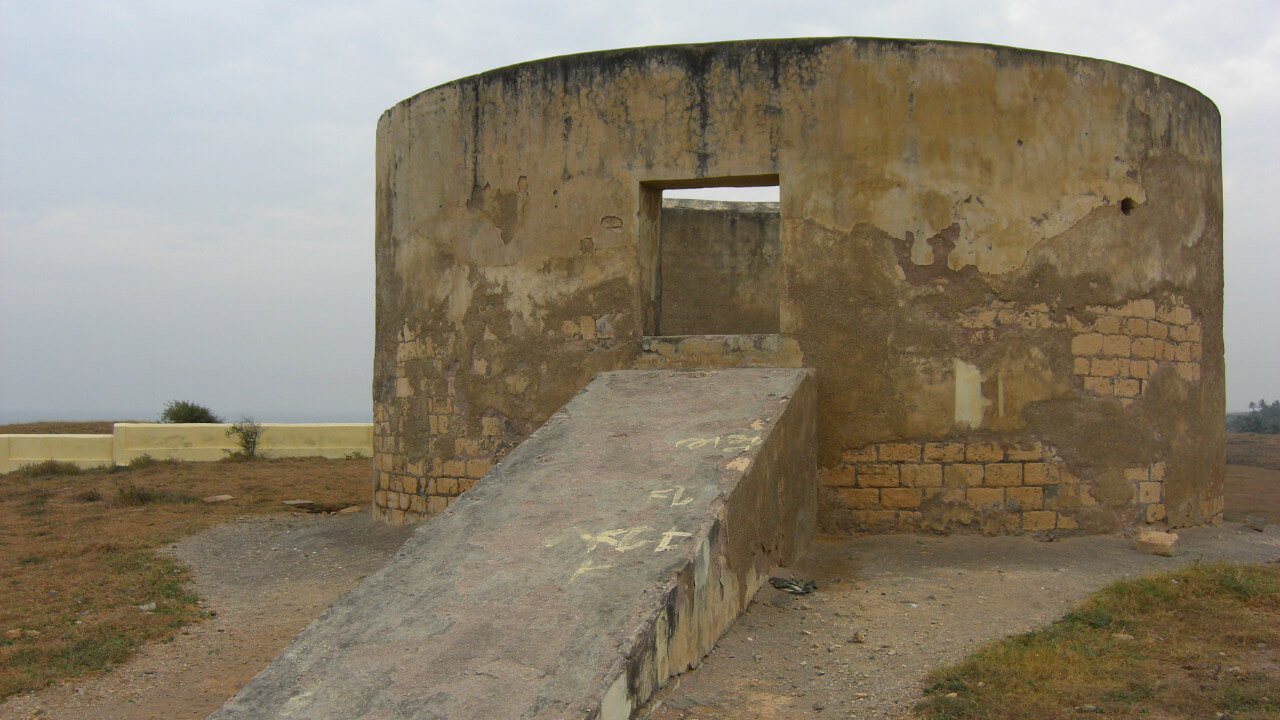
The most prominent, perhaps, Tower of Silence in India are the ones of Mumbai. They are located on a hilltop not too close to the city.
Additionally, these buildings are used to dispose of the bodies of Zoroastrians. Modernity meets tradition, since Parsi have installed solar panels that create particularly high temperatures within the structure. Specifically, the temperature inside a Tower of Silence in Mumbai easily reaches 120 degrees Celsius (or 248 Fahrenheit). The extreme heat accelerates the decomposition process and turns the body into skeletal remains in even just three days.
Interestingly, vultures have been historically important to certain cultures or religious groups throughout the world. That often extended to them being used to deflesh human bodies. The Parsi are one of these groups and vultures and birds of prey are present near the Towers of Silence. Moreover, the intensity of heat combined with vultures and hawks ensures that the bodies of Zoroastrian will not spread any spiritual pollution.
The government of India has also granted permission to the Parsi to build an aviary specifically for vultures. In theory, it would be particularly interesting if human bodies help vultures to not get further endangered. However, the aviary is not yet built due to financial and logistic concerns.
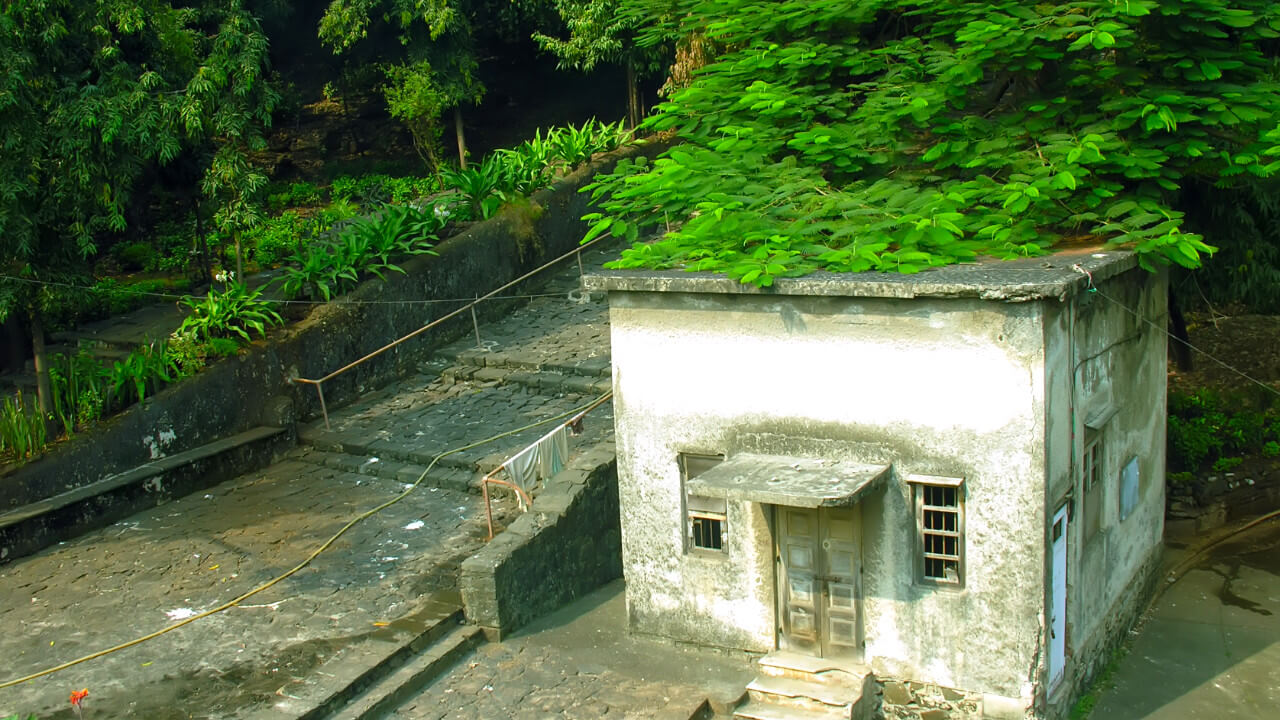
We hope you learned something new regarding this country’s death practices!
For details on Tibetan sky burials have a look here. If you want know more about similar Zoroastrian funeral practices, feel free to check out our Iran article! Finally, you can learn more about Balinese Hinduism and its cremation practices here.
The average mixed death rate of India is 7,265 per 1.000 people (2019).
Hindu funerals usually take place within 48 hours after death. Most relatives prefer to have the funeral as soon as possible in most cases during the first day upon a person’s death. This includes the cremation ritual.
Four of the world’s biggest religions started in India. This of course includes Hinduism and Buddhism but also Jainism and Sikhism. However, contemporary India is home to many more religious practices. Additionally, Hinduism remains the most practiced religion with almost 80% of the population identifying as its followers. The most popular, though, minority religion is Islam (14,2%), with Christianity following with just 2,3%. The rest of the Dharmic religions come next with 1,72% practicing Sikhism, 0,7% Buddhism and 0,37% Jainism.
Other minority religions include Zoroastrianism, the Bon religion, the Baháʼí Faith, Sanamahism, and Judaism. Finally, it is worth pointing out that even small minority religions actually have (hundreds of) thousands of followers since India’s population is over 1,3 billion!
India’s rate of utilized organs is unknown in recent years according to the National Tissue & Organ Transplant Organization. However, the rate of actual deceased donors in 2019 was 0,52 per million people. That corresponds to 712 deceased donors for that year.